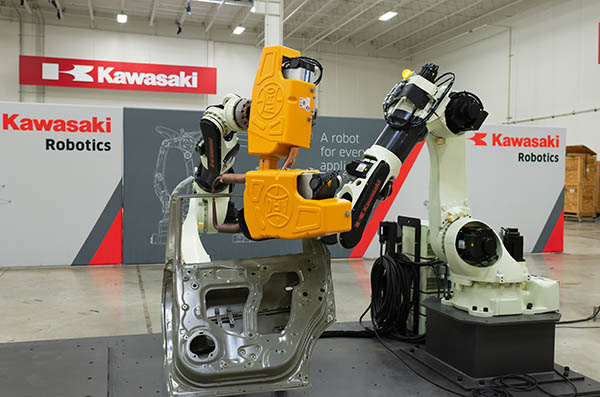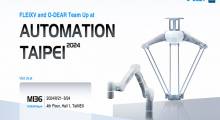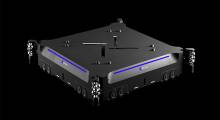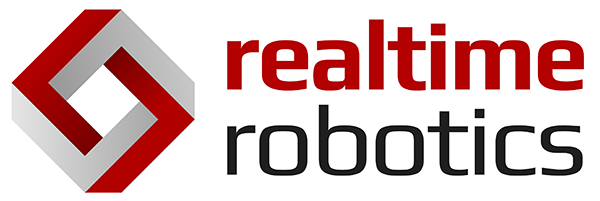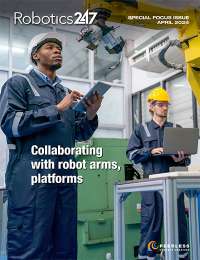DETROIT—Realtime Robotics today announced that it has teamed up with Kawasaki Robotics Inc. to automate the programming, deployment, and control of industrial automation.
Wixom, Mich.-based Kawasaki and Boston-based Realtime Robotics have collaborated to build a demonstration cell. It will be in Kawasaki’s Booth 2332 at Automate 2022, taking place at the Huntington Place Convention Center here from June 6 to 9.
The spot-welding cell displays the combined power of Kawasaki Robotics' KRNX open programming platform and Realtime Robotics’ motion-planning and collision-avoidance software, integrated with two Kawasaki BX100N robots.
KRNX is an application programming interface (API) plugin that enables real-time control (RTC) by advanced users to execute complex and irregular applications. Realtime said KRNX allows Kawasaki robots to use unlimited external computing power, enabling anything from AI and machine learning applications to advanced safety.
A deeper look at Kawasaki's demo
Two Kawasaki BX100N robots will simulate the welding of a car door using ARO 3G modular spot-welding guns. Realtime Robotics said its RapidPlan software enables show attendees to see firsthand how quickly and efficiently robot motions can be modified—all without any reprogramming or manual verification of motion planning.
Users can start, stop, or reset all or any individual robots; modify target allocation; change target order; and add or remove existing targets to the robot sequence, said the company.
Realtime Robotics and Kawasaki have partnered on several projects, including helping a major automotive manufacturer improve the speed of programming by 70%. This manufacturer reduced the pre-production engineering commissioning process through the use of automatic, collision-free motion-planning technology. In the future, it could eliminate the time-consuming physical validation of robot paths altogether, claimed the duo.
“The combination of Kawasaki’s quality robots [and] advanced programming platform and Realtime Robotics' software is an industry game changer, providing manufacturers from all industries with unprecedented flexibility, from automating programming of robotic motion and collision avoidance to the very design of the manufacturing floor,” stated Kazuhiro Saito, president of Kawasaki Robotics. “This is the future of automation, and the very best is yet to come.”
Depending on the complexity of the project, the number of robots the customer programs, and whether they are starting from scratch or simply making modifications, programming requirements can be shortened by weeks with Realtime Robotics RapidPlan software, the company said.
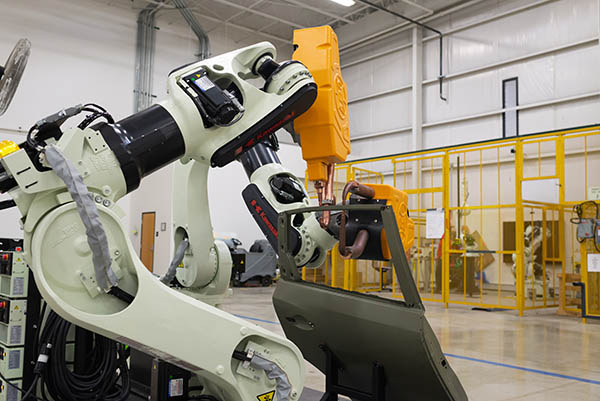
Realtime’s RapidPlan helps prevent collisions
In addition, Realtime Robotics today announced a new version of RapidPlan. Its executives are also taking part in various speaking engagements at the event.
During the on-site physical validation stage, a user typically needs to have a highly skilled team working after hours to manually run through every move combination, ensuring seamless operations on the live factory floor. Because RapidPlan produces collision-free paths, it automatically removes the need to verify against potential collisions, resulting in significant time savings, the company claimed.
“Today’s automotive manufacturers don’t have time or staff to waste,” said Peter Howard, CEO of Realtime Robotics. “Factory floors and all related actions must be constantly optimized in order to maintain a competitive advantage and continue delivering excellent product to customers.”
“Kawasaki Robotics is a terrific partner to work with, as they understand how speeding or eliminating time-consuming and manual processes can directly improve a manufacturer’s production time—and its profits,” he noted.
Expanding on an established partnership
It is easy to make a mistake, such as grabbing the wrong teach pendant and jogging the robot in the wrong direction, causing a collision. RapidPlan will alert the user of a collision about to happen, in order to prevent it.
“Kawasaki was one of the first robot companies to see the potential of combining an advanced Real Time Control API like KRNX with our RapidPlan real-time autonomous motion planner to enable a whole new way of designing and deploying robotic systems,” Howard said.
“We feel privileged to have had continuous support from their quality robot family, interface, and people in realizing our joint vision for what the future of robotics should look like,” added Howard.
Article topics
Email Sign Up

